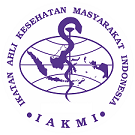Exploring Factors Impacting Oral Health Behavior in Children with Special Needs
DOI:
https://doi.org/10.26911/thejmch.2024.09.06.06Abstract
Background: Oral health is a reflection of general health. Children with disabilities are more prone to problems such as dental caries and periodontal disease compared to children in general due to various factors. Indonesia has 3.3% of children with disabilities aged 5 to 17 years old. Families, especially mothers, play a crucial role in maintaining the dental health of children with disabilities because they are responsible for meeting basic needs and oral hygiene. The Health Belief Model theory can be used to understand parental behavior related to the health of children's oral cavity. This study aims to examine the influence of factors in HBM theory on the oral health of children with special needs.
Subjects and Method: This study uses a cross-sectional method conducted at Sukoharjo and B-C YPPALB Langenharjo schools for special needs children, Central Java, Indonesia. A total of 200 parents or guardians of children with disabilities were obtained by random sampling. The bound variable was in the form of oral health behavior while the independent variable was in the form of vulnerability perception, severity perception, benefit perception, obstacle perception, stimulus to act, and self-efficacy. The results of the study were analyzed using multiple linear regression.
Results: Oral Health Behavior increases with increased perception of vulnerability (b= 0.11; 95% CI= 0.11 to 0.21; p= 0.030), perception of severity (b= 0.16; 95% CI= 0.17 to 0.30; p= 0.028), perception of benefit (b= 0.12; 95% CI= 0.16 to 0.22; p= 0.024), stimulus to act (b= 0.18; 95% CI= 0.11 to 0.35; p= 0.037), and self-efficacy (b= 0.18; 95% CI= 0.11 to 0.26; p=0.000) and decreases with increasing perception of barriers (b= -0.15; 95% CI= -0.20 to - 0.11; p=<0.000).
Conclusion: Perception of vulnerability, perception of severity, perception of benefit, stimulus to act and self-efficacy increase oral health behavior and perception of obstacles decreases oral health behavior.
Keywords:
health belief model, oral health behavior, disabilityHow to Cite
References
Adhi YK, Octavia A (2013). Perbedaan tingkat kejadian karies pada anak berkebutuhan khusus berdasarkan jenis kelamin di kelas 1-4 SDLB Widya Mulya (Differences in the incidence of caries in children with special needs based on gender in grades 1-4 of SDLB Widya Mulya), Pundong, Bantul, DIY. Insisiva Dent J. 2(2):27-34. https://doi.org/10.18196/di.v2i2.573.
Alamri H (2022). Oral care for children with special healthcare needs in dentistry: a literature review. J Clin Med. 11: 5557. https://doi.org/10.3390/jcm1195557.
Anders PL, Davis EL (2010). Oral health of patients with intellectual disabilities: a systematic review. Spec Care Dent. 30: 110-117. https://doi.org/10.1111/j.17544505.2010.00136.x.
Ashoori F, Karimi M, Mokarami H, Seif M (2020). Using health belief model to predict oral health behaviors in girl
students: a structural equation model. Pediatr Dent J. 30(1). https://doi.org/10.1016/j.pdj.2019.12.001.
Badan Penelitian dan Pengembangan Kesehatan. (2018). Laporan Nasional Riskesdas 2018. Jakarta: Kementerian Kesehatan Republik Indonesia.
Cui S, Akhter R, Yao D, Peng XY, Fenghali MA, Chen W, Clackburn E, et al. (2022). Risk factors for dental caries xperience in children and adolescent with cerebral palsy a scoping review. Int J Environ Res Public Health. 19(13): 8024. Https://doi.org/10.3390/ijerph19138024.
Goodarzi A, Heidarnia A, Tavafian SS, Eslami M (2019). Predicting oral health behaviors among Iranian students by using health belief model. J Educ Health Promot. 8:10. https://doi.org/10.4103/jehp.jehp_10_18.
Kosasih, E (2012). Cara Bijak Memahami Anak Berkebutuhan Khusus (How to Understand Children with Special Needs wisely). Bandung: Yrama Widya.
Krishnan L, Iyer K, Madan KPD (2020). Barrirers to utilization of dental care services among children with special needs: a systematic review. Indian J Dent Res. 31(3) : 486-93. https://doi.org/10.4103/ijdr.IJDR_542_18.
Mogadham MHB, Azad MM, Biria M, Sabour S (2015). Evaluation of oral hygiene care of under 4 years old children by their mothers based on Health Belief Model. Journal of Dental School, Shahid Beheshti University of Medical Sciences. 33(1): 9-18. https://doi.org/10.22037/jds.v33i1.24738.
Ningrum V, Bakar A, Shieh TM, Shih Y (2021). The Oral Health Inequities between special needs children and normal children in Asia: a systematic review and meta-analysis. Healthcare (Basel). 9(4):140. https://doi.org/10.3390/healthcare9040410.
Nunes FS, Fernandez MS, Viana VS, Silva NRJ, Rodrigues KP, Vieira IS, Martins-Filho PRS, et al. (2020). Factors Associated with the oral health-related quality of life in children with intellectual disabilities. ODOVTOS-Int. J Dental Sci. 23 (1): 140-154. http://dx.doi.org/10.15517/ijds.2020.43309
Phantavhong S, Nonaka D, Phonaphone T, Kanda K, Sombouaphan P, Wake N, Sayavong S, et al. (2019). Oral health behavior of children and guardian’s beliefs about children’s dental caries in Viantiane, Lao People’s Democratic Republic (Lao PDR). PLoS One. 14 (1):e0211257. https://doi.org/10.1371/journal.pone.0211257.
Quach H (2020). How can children be involved in developing oral health education interventions?. Evid Based Dent. 21(3): 104-5. https://doi.org/10.1038/s4143202001226.
Sanaeinasab H, Saffari M, Taghavi H, Zarchi AK, Rahmati F, L Zaben F, Koenig HG (2022). An educational intervention using health belief model for improvement of oral health behavior in grade-schoolers: a randomized cotrolled trial. BMC Oral Health. 22(1):94. https://doi.org/10.1186/s12903022021322.
Sulaeman S. (2016). Model dan teori perilaku kesehatan konsep dan aplikasi (Health behavioral models and theories, concepts and applications). Surakarta: UNS Press.
Soltani R, Eslami AA, Akhlagi N, Sharifirad G, Alipoor M, Mahaki B (2017). Toothbrushing frequency among 4-6 yearsold Iranian children and associated maternal attitude and sociobehavioral factors. Dent Res J. 14(10): 50-56. https://doi.org/10.4103/17353327.201137.










